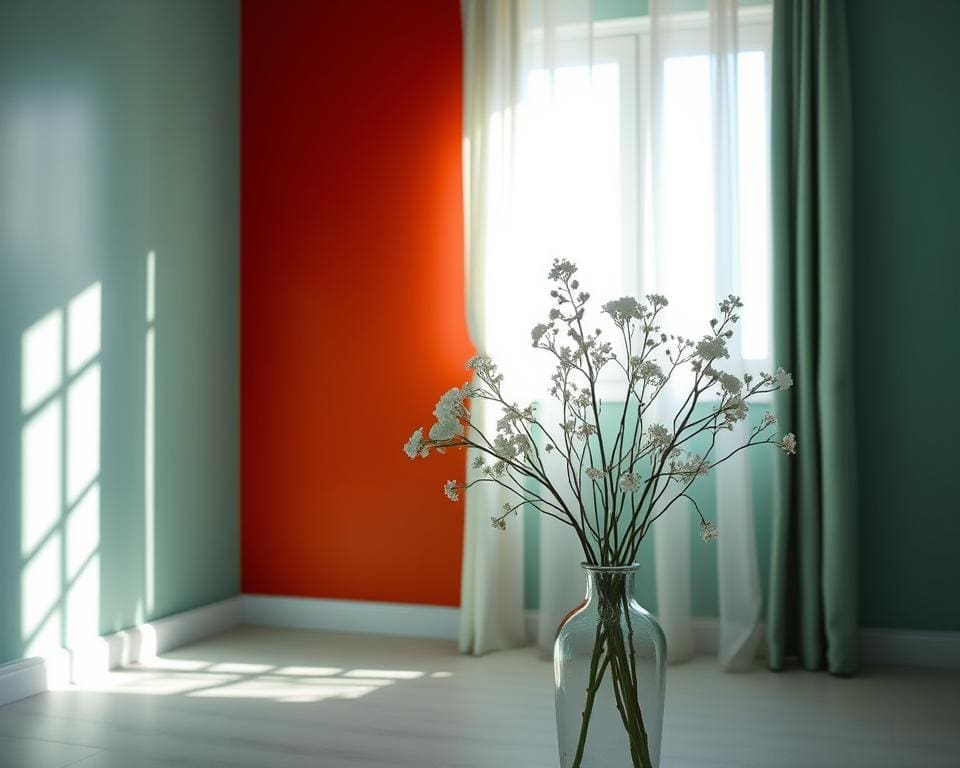Embarking on the journey of selecting paint colours for your interiors can be both exhilarating and daunting. This guide aims to empower you with essential knowledge on How to Pick Paint Colours as a Novice. Understanding the emotional and creative aspects of colour selection is crucial, as the right shades can transform your living space into a personal sanctuary. Colour choices are not merely aesthetic; they reflect your unique style and can significantly influence the mood of your surroundings. With our Beginner’s Tips for Selecting Paint Colours, you’ll gain the confidence needed to navigate the vibrant world of paint, enabling you to express your personality and create a home that resonates with you.
Understanding the Importance of Paint Colours
The selection of paint colours plays a vital role in shaping the essence of a space. Each hue communicates emotions and influences perceptions, making awareness of The Impact of Colour on Mood and Atmosphere essential for anyone considering a fresh coat of paint. Understanding how various colours can transform feelings not only enriches interiors but also enhances overall well-being.
The Impact of Colour on Mood and Atmosphere
Colours have the incredible power to evoke specific feelings within us. For instance, calming shades of blue often promote relaxation, while vibrant yellows can infuse energy and positivity into a room. Carefully chosen pigments have the ability to change how we experience a space, emphasising the significance of thoughtful selection when it comes to creating an inviting atmosphere.
How Colour Choices Reflect Personal Style
Every individual’s preference for colours often mirrors their personality and style. How Colour Choices Reflect Personal Style offers insight into personal expression through colour. Whether choosing muted tones for a minimalist vibe or bold hues for an eclectic look, paint colours can become a visual representation of who we are. Interior design experts, including those at the Pantone Colour Institute, underline how our colour selections are not merely aesthetic choices but reflections of our identity and lifestyle.

Choosing Paint Colours for Beginners
Embarking on the journey of selecting paint colours can feel overwhelming, particularly for those new to home design. Understanding personal style and spatial dynamics plays a vital role in making informed choices. This section provides essential insights for effective decision-making.
Identifying Your Style Preferences
Finding your unique style is one of the first steps in Choosing Paint Colours for Beginners. Searching through interior magazines or browsing online platforms such as Pinterest can provide inspiration. Consider the colours that resonate with you in various settings:
- Do you prefer warm, inviting tones or cool, serene hues?
- Are bold contrasts more appealing than subtle, harmonious palettes?
- Which materials and finishes attract your attention and how can they influence your colour choices?
Collect images that speak to your style and reflect your ideals. Over time, patterns will emerge, allowing you to identify a cohesive colour theme that feels authentically yours.
Considering Light and Space in Your Choices
Light profoundly influences how colours appear. Natural light can enhance the vibrancy of shades, while artificial light might alter their perception. Here are some straightforward Easy Steps for Choosing Paint Colours:
- Evaluate the direction your windows face and how much light each room receives.
- Test paint samples on walls and observe how they change throughout the day under different lighting.
- Think about the size of your room; lighter colours can make small spaces feel larger, while darker ones create a more intimate atmosphere.
By considering both light and the spatial dynamics of your home, you will gain clarity in your colour selections, ensuring they enhance your living experience rather than hinder it.
A Beginner’s Guide to Choosing Paint Colours
Selecting the right paint colours can transform a space, allowing personal creativity to shine through. For those navigating this process, understanding how to create a colour palette plays a crucial role. This section offers a structured approach to creating a cohesive colour scheme while outlining the benefits of using a colour wheel to enhance your selections.
Creating a Colour Palette: Key Steps to Follow
The first task in your Paint Colour Selection Guide for Beginners is to choose a primary colour. This colour will serve as the foundation for your palette. Once you have selected your main colour, consider adding complementary colours that either contrast or harmonise with it. Accent colours can then be integrated to provide depth and character to your space.
- Start with your inspiration: Look at fabrics, artwork, or decor that resonate with you.
- Choose a dominant colour: Select a hue that speaks to your style and the mood you wish to create.
- Incorporate complementary colours: Identify shades that enhance your chosen colour without overwhelming it.
- Add accent colours: Use bolder or darker colours sparingly to draw attention to specific areas.
The Role of the Colour Wheel in Selection
The colour wheel serves as an invaluable tool when creating a colour palette. By visualising relationships between colours, beginners can easily identify which hues work well together. Use the wheel to explore analogous colours for a seamless blend or to find contrasting colours for visual interest. This resource simplifies colour theory, ensuring your choices feel well thought out and aesthetically pleasing.
Easy Steps for Choosing Paint Colours
Embarking on the journey of selecting paint colours can be both exciting and daunting. To ensure you achieve the desired outcome, there are crucial steps that can transform your experience into a rewarding one. By applying these easy steps for choosing paint colours, you can avoid common pitfalls while creating an atmosphere that truly reflects your style.
Sampling Colours: Tips for Effective Testing
One of the most vital beginner’s tips for selecting paint colours is to sample them before making a commitment. Rather than relying solely on swatches, it is beneficial to paint a section of your wall or use poster boards to view how the colours interact with your space. Observe the colours at different times of the day, as lighting can greatly influence their appearance. This practical approach allows you to appreciate the nuances of the shades and ensures that your final choice harmonises with your vision.
Understanding Finish and Its Effects on Colour Perception
The finish of paint can significantly affect how colours are perceived in your chosen environment. Options such as matte, satin, and gloss each come with unique qualities. For instance, a matte finish may soften a bold colour, while a gloss finish can brighten a space and highlight imperfections. Therefore, consider how each finish complements the colour under various lighting conditions. This knowledge will empower you to select a finish that not only achieves aesthetic appeal but also suits the functionality required for your space.
Ultimately, by exercising patience and careful consideration, you can ensure that your paint colour selection aligns beautifully with your personal taste and enhances the overall ambience of your home.









